Technical Design: How to Craft a Strong Portfolio
Are you interested in Technical Game Design career and how to prepare your portfolio for job applications? Our teammates will tell you about all this and even more – so we wish you a pleasant reading!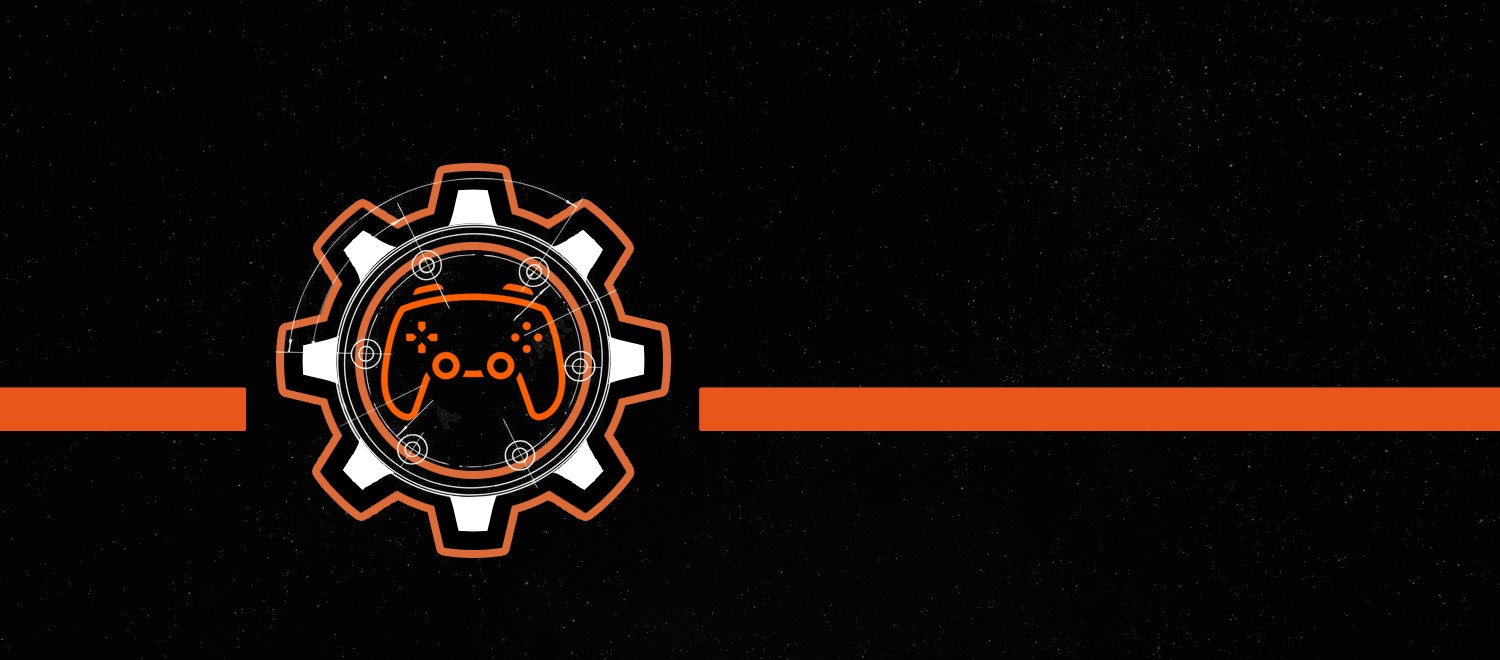
Role and Responsibilities of a Technical Game Designer
In the previous article, we discussed tasks and recommendations for level designers’ portfolios, and this area is sometimes confused with technical game design. So, let’s start by distinguishing between these two professions and understanding what exactly technical designers do:
Volodymyr:
“Technical Designers create game mechanics and make sure they work well with other elements in the game. Level Designers use these mechanics to build game environments and create gameplay scenarios where players interact with them. Although these roles are connected, they are quite different.
The main task of a Technical Designer is to create prototypes of the mechanics that will be used in the game:
- It all starts with the main thing – the technical documentation. This is a fundamental element that describes how the prototype works, the rules it follows, what it does, and how it interacts with the world and the player.
- Then begins the long and challenging process of creating a prototype based on this document, which can often be the most difficult part.
- After the prototyping stage is complete, the Technical Designer oversees the finalization of all the prototype components: meshes, effects, sounds, and animations used in it.

Ihor:
“We are responsible for the development and implementation of game mechanics and systems. In general, Technical and Level Designers work in tandem, where we provide the tools, and Level Designers use them to create engaging gameplay moments for the player.”
Must-Have Tech Designer Skills
What skills and knowledge do you need if you are applying for such a position? Here’s what Ihor and Volodymyr recommend:
Basic skills:
- Understanding the principles of game design.
- Hands-on experience with popular game engines, especially prototyping skills.
- Basic understanding of mathematics and physics in the context of games.
- Broad understanding of the modern gaming industry (popular genres/mechanics and how they work).
- The ability to create technical documentation that will be clear to everyone.
- Proficiency in English at least at an intermediate level.
- Well-developed soft skills, as you will need to communicate with a variety of people.
Additional advantages:
- Basic knowledge of programming languages.
- Understanding UI/UX design.
- Experience in game testing.
Technical Designer Portfolio: Recommendations
Our teammates have also developed brief recommendations for portfolios for all levels of specialists:
Junior:
- Game design documentation (in particular, descriptions of developed game mechanics).
- Prototypes of small game mechanics.
- Examples of scripts or code.
- Educational projects or modifications of existing games.
We recommend at least creating a prototype of a small game, even based on some tutorial. This will immediately provide insight into your basic skills.
Middle:
- Everything mentioned for Junior.
- Examples of implemented mechanics in commercial projects with detailed descriptions of your contributions.
- Prototypes of complex mechanics.
- Independent projects.
Senior:
- Everything mentioned for Middle.
- Examples of implemented key/large systems in commercial projects.
- Publications or presentations at industry conferences (if available).
- Examples of successful collaboration with other departments (technical animation/technical art).
For Middle and Senior people, the best option is to mention released projects of any level (AA or AAA).
And if your future employer wants to know more details about your experience, they will ask about it during the interview. Also, it’s likely that will be given a test task, which will provide a good understanding of your knowledge level.
How to Better Format Your Portfolio
Ihor:
“I would recommend doing this as a PDF or a webpage with descriptions of the work and the process of its execution, as well as videos showing the results of your work.
As for the description of each piece of work, I would recommend:
- Clearly stating your role in the project, listing the mechanics.
- Noting the departments you worked with and explaining the impact your work had on the project.
- Describing the problems you encountered and how you solved them.
- Providing specific success cases.
- Adding supporting materials (screenshots or finished builds).
- Explaining technical aspects in clear, understandable language.”
Examples of Great Portfolios:
Of course, everyone has their own perspective on what a portfolio should look like, but if we’re talking about something awe-inspiring that you can take inspiration from, we recommend checking out these portfolios (these tech designers are not our employees, but their portfolios have impressed us in a very positive way):
For instance, this portfolio has everything a potential employer needs to get essential information about the candidate quickly:
- A brief introduction that can be expanded to reveal the candidate’s education and work experience.
- Key information in numbers and technologies they have worked with. Everything is presented concisely and is easy to grasp at a glance.

- Next comes a list of key (largest and most important) projects, each of which can be expanded to learn more details.
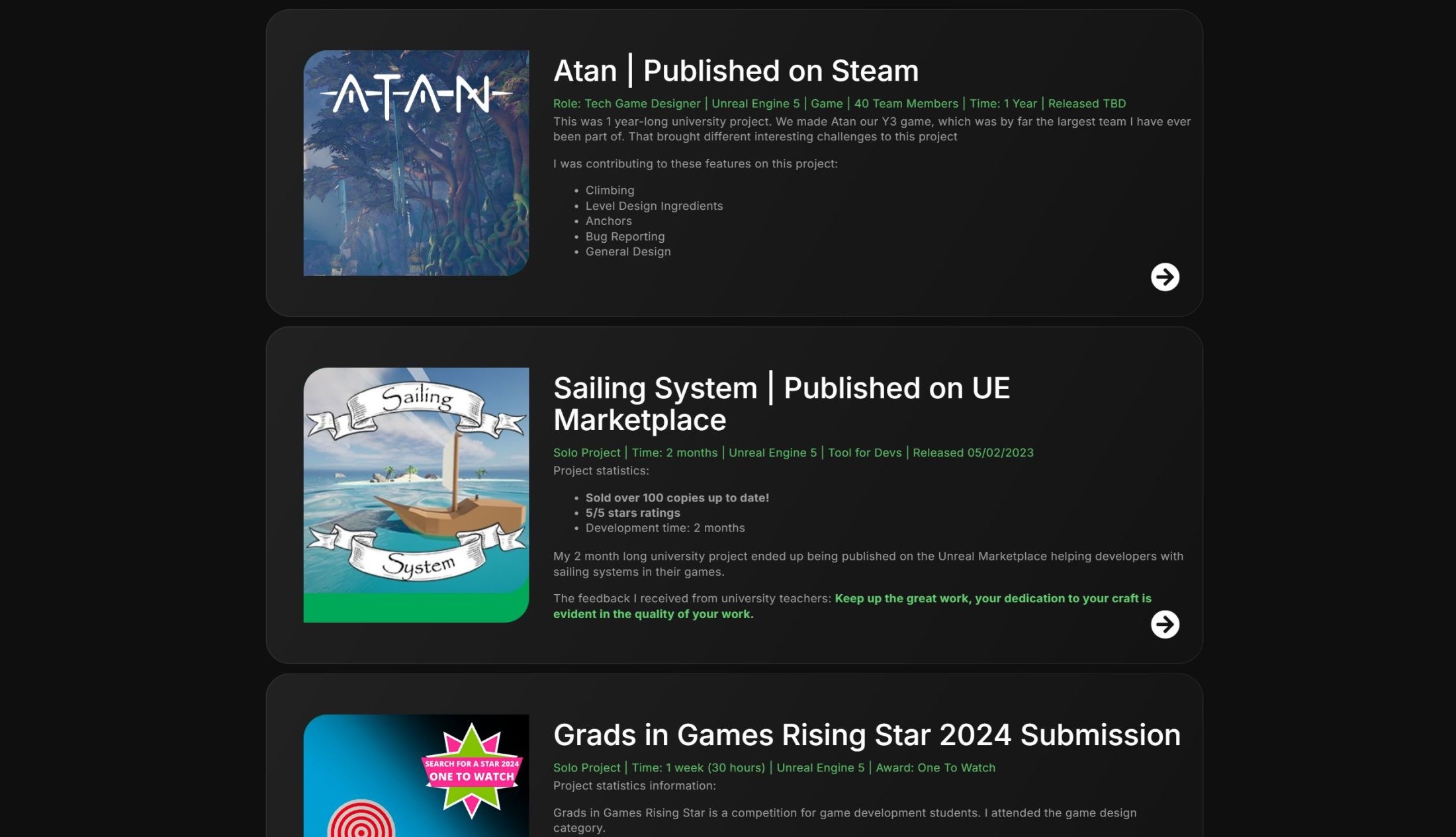
- Here’s what a brief introduction for each project looks like: a short description, the tasks the candidate was responsible for, and the results.
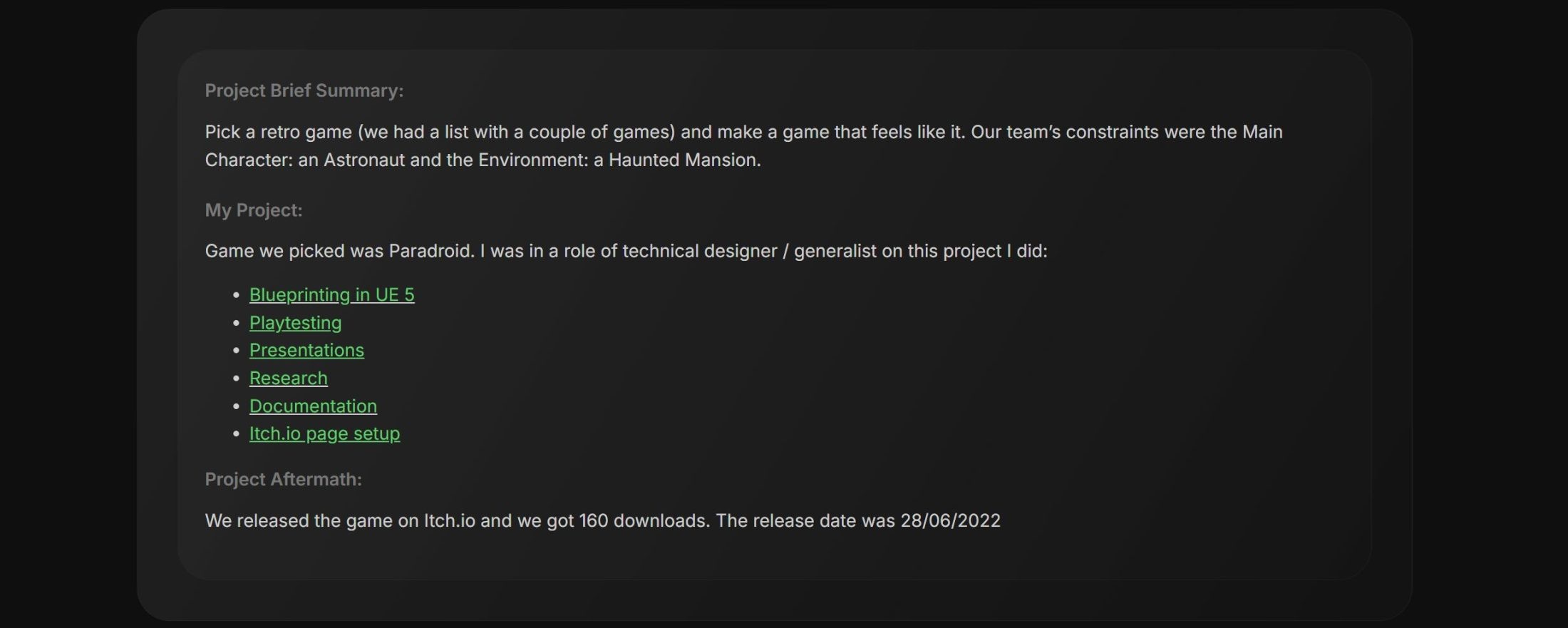
- Below is a detailed breakdown of the tasks the tech designer performed, along with illustrations that allow you to see both the process and the work results.
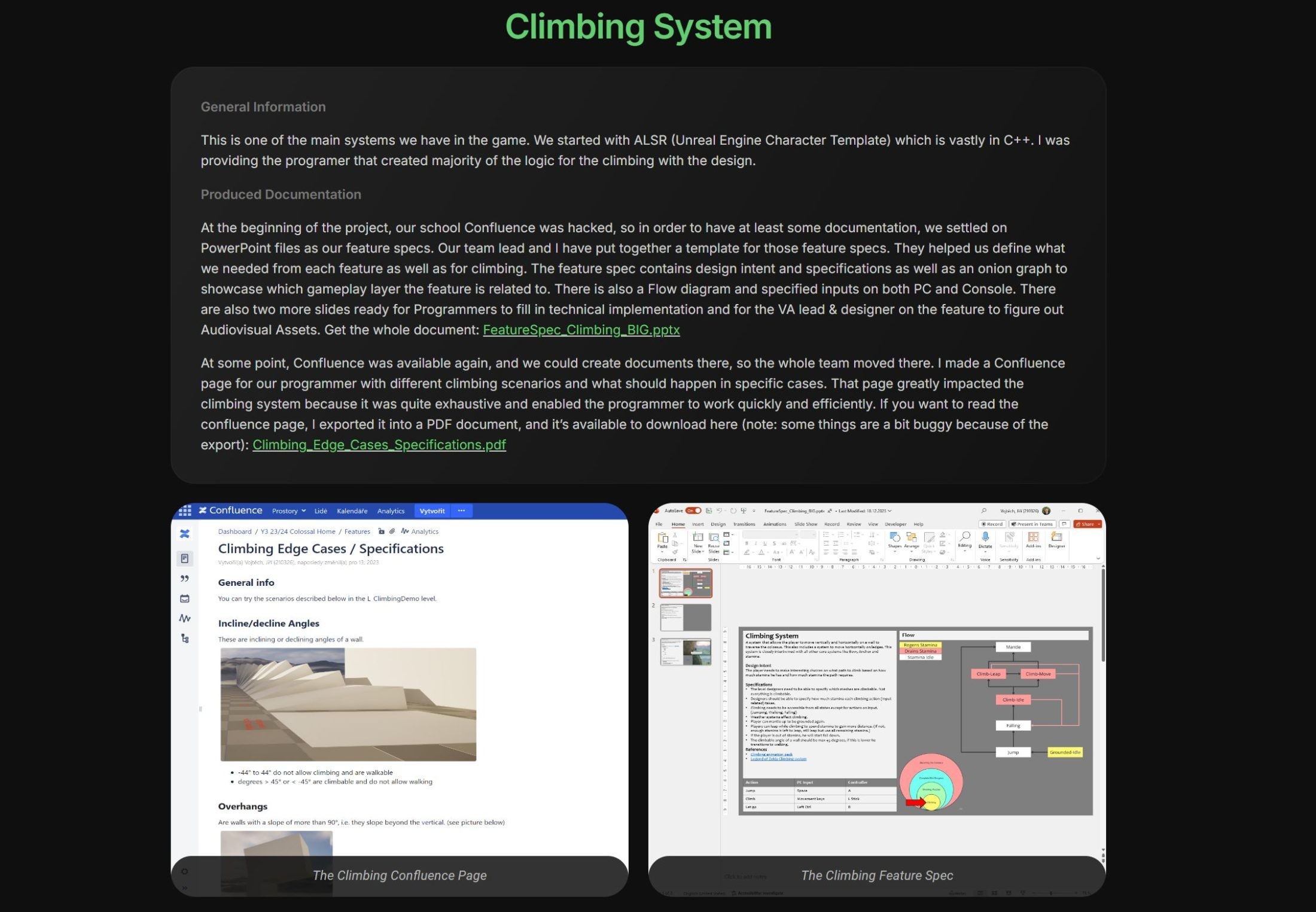
- The portfolio concludes with a selection of other projects the specialist has worked on, a resume that can be downloaded for a more detailed look, and a call to action that opens a contact window when clicked.

Among other portfolios that can inspire you when creating your own one, we recommend looking at this example. It includes not only the specialist’s work, which is divided into commercial and personal/academic projects, but also thoughts on different video games, game design ideas, and more.
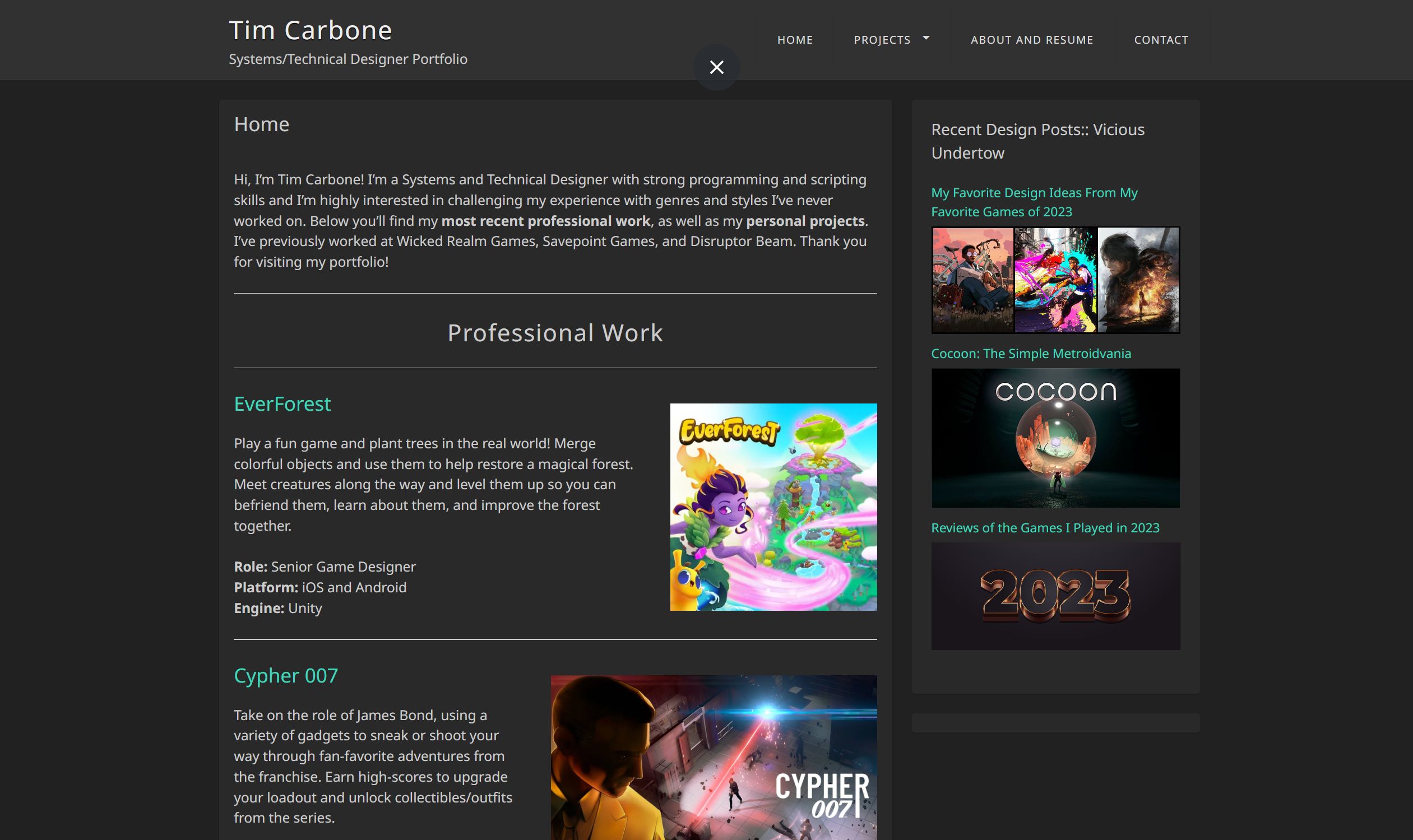
If you’re looking for a strong example of project task descriptions, this portfolio is ideal. The tech designer added a short list of facts to the description, such as the technologies used and the key tasks. A highly detailed description with videos, illustrations, and animations gives a complete understanding of what they worked on and what results were achieved.
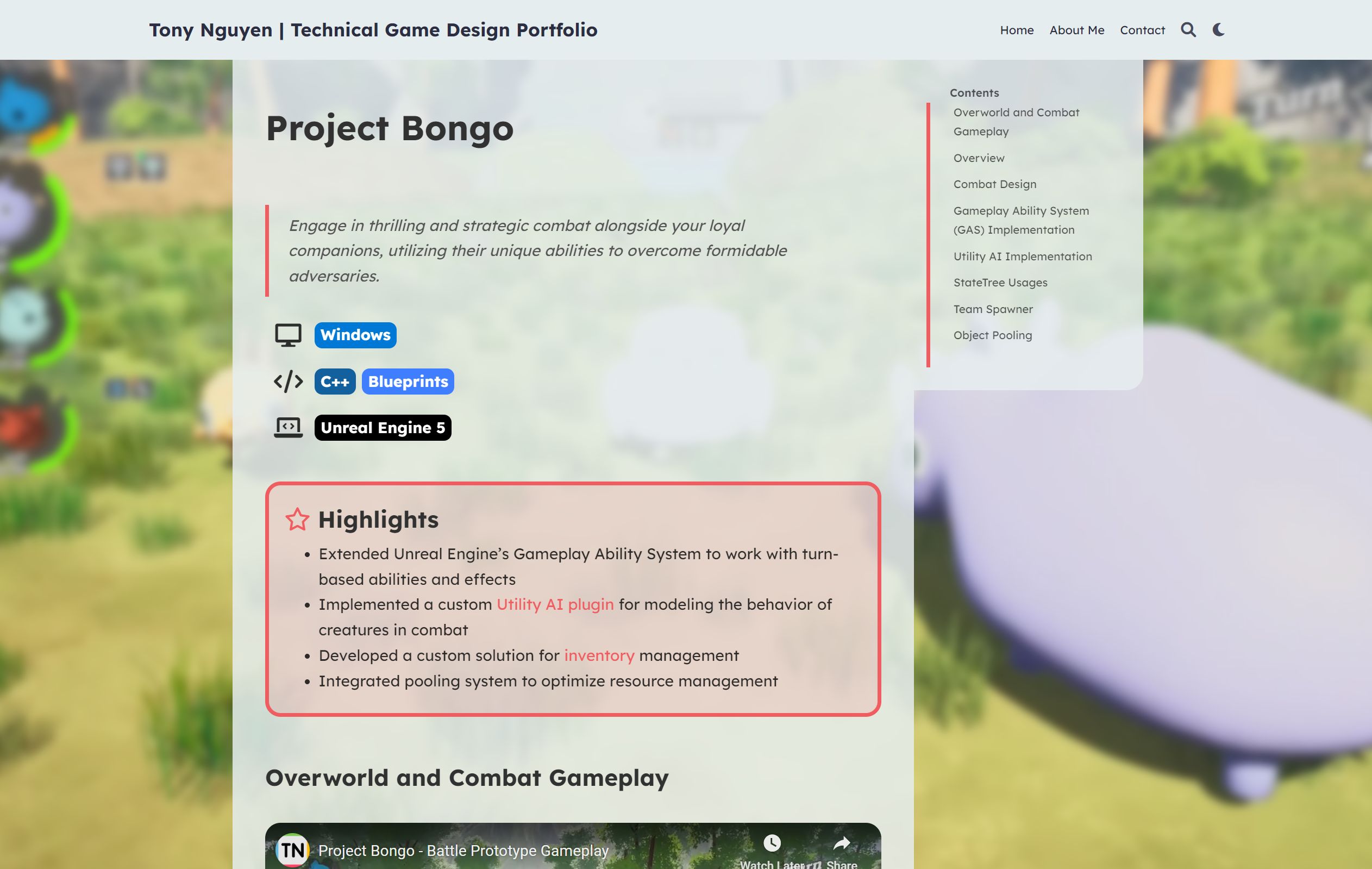
Another convenient feature is a clickable table of contents that allows you to jump to specific parts of the description without scrolling everything manually.
Such portfolios are not very common in practice, as creating them takes a lot of time. It’s not critical that they look exactly like this. However, certain elements (such as detailed descriptions, a table of contents, an introduction about yourself, etc.) can be very useful when creating your unique portfolio. If you like something, feel free to add it to your list of ideas! 😉
How to Further Highlight Your Skills
Volodymyr:
“Having your own game can be a great addition to any portfolio if you have the time for that. And if others are playing your game, many doors will likely open for you.”
Ihor:
- “Take part in game jams and include the projects from these events in your portfolio.
- Work on independent projects (and also showcase them in your portfolio).
- Create educational materials for others.
- Work on obtaining certifications in relevant technologies.”
As you can see, everything is not as difficult as it seems! So take all the recommendations, plan where to start, improve your Technical Design portfolio, and get dream offers! 🙂
We hope everything will work for you!


